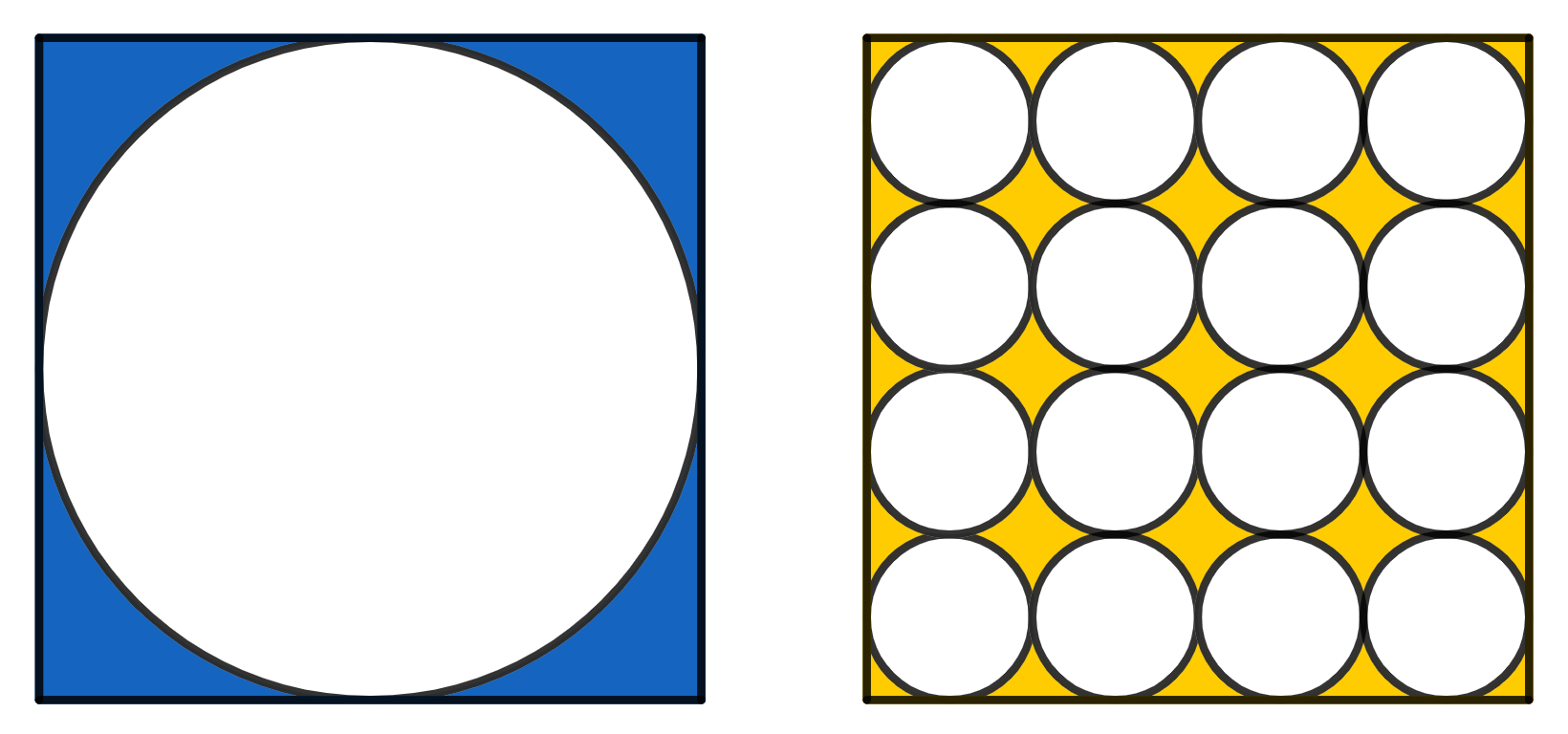Problems
On the left there is a circle inscribed in a square of side 1. On the right there are 16 smaller, identical circles, which all together fit inside a square of side 1. Which area is greater, the yellow or the blue one?

Prove that, for any integer \(n\), among the numbers \(n, n + 1, n + 2, \dots , n + 9\) there is at least one number that is mutually prime with the other nine numbers.
There are 13 weights, each weighing an integer number of grams. It is known that any 12 of them can be divided into two cups of weights, six weights on each one, which will come to equilibrium. Prove that all the weights have the same weight.
Numbers \(1, 2, 3, \dots , 101\) are written out in a row in some order. Prove that one can cross out 90 of them so that the remaining 11 will be arranged in their magnitude (either increasing or decreasing).
Prove that if \(x_0^4 + a_1x_0^3 + a_2x_0^2 + a_3x_0 + a_4\) and \(4x_0^3 + 3a_1x_0^2 + 2a_2x_0 + a_3 = 0\) then \(x^4 + a_1x^3 + a_2x^2 + a_3x + a_4\) is divisible by \((x - x_0)^2\).
Solve the equation \(x^3 - \lfloor x\rfloor = 3\).
There is a system of equations \[\begin{aligned} * x + * y + * z &= 0,\\ * x + * y + * z &= 0,\\ * x + * y + * z &= 0. \end{aligned}\] Two people alternately enter a number instead of a star. Prove that the player that goes first can always ensure that the system has a non-zero solution.
There are two sets of numbers made up of 1s and \(-1\)s, and in each there are 2022 numbers. Prove that in some number of steps it is possible to turn the first set into the second one if for each step you are allowed to simultaneously change the sign of any 11 numbers of the starting set. (Two sets are considered the same if they have the same numbers in the same places.)
30 pupils in years 7 to 11 each created at least one maths problem, making 40 maths problems altogether. Every possible pair of pupils in the same year created the same number of problems. Every possible pair of pupils in different years created a different number of problems. How many pupils created exactly one problem?
You are given \(7\) straight lines on a plane, no two of which are parallel. Prove that there will be two lines such that the angle between them is less than \(26^{\circ}\).